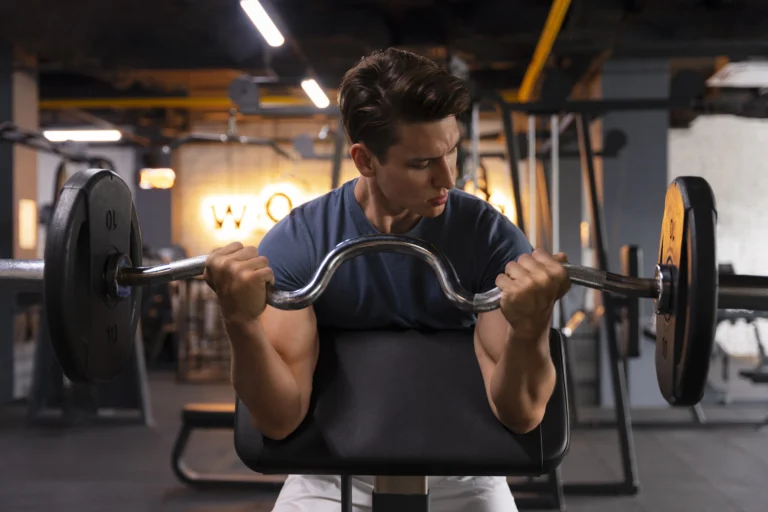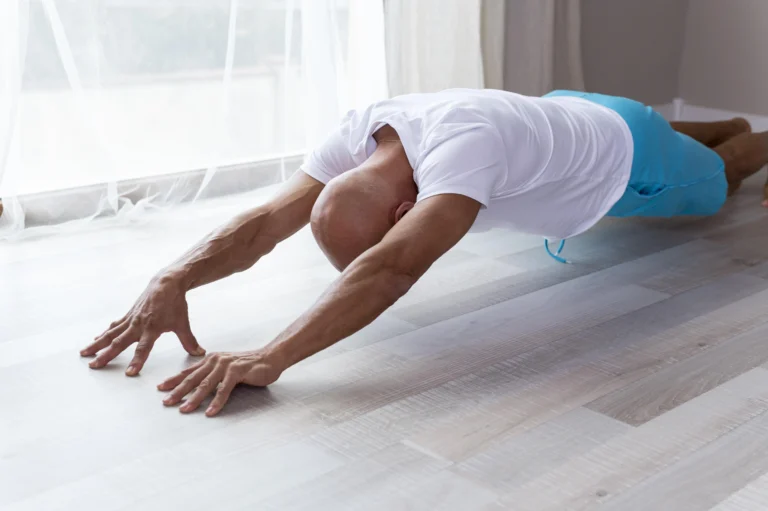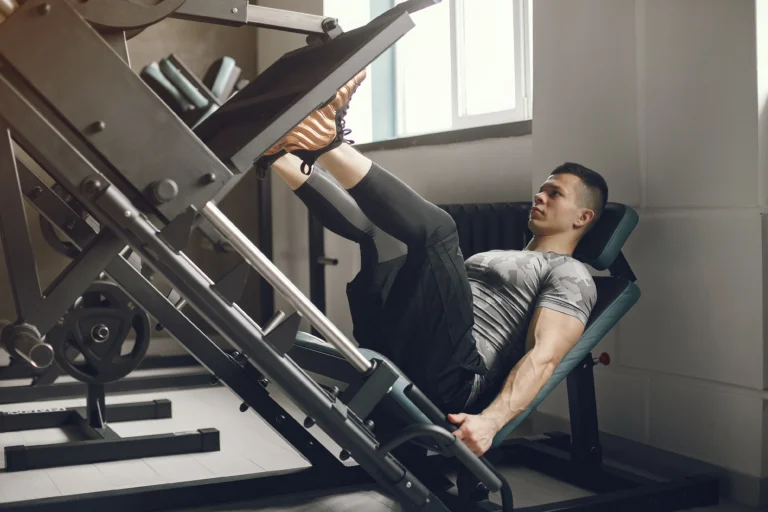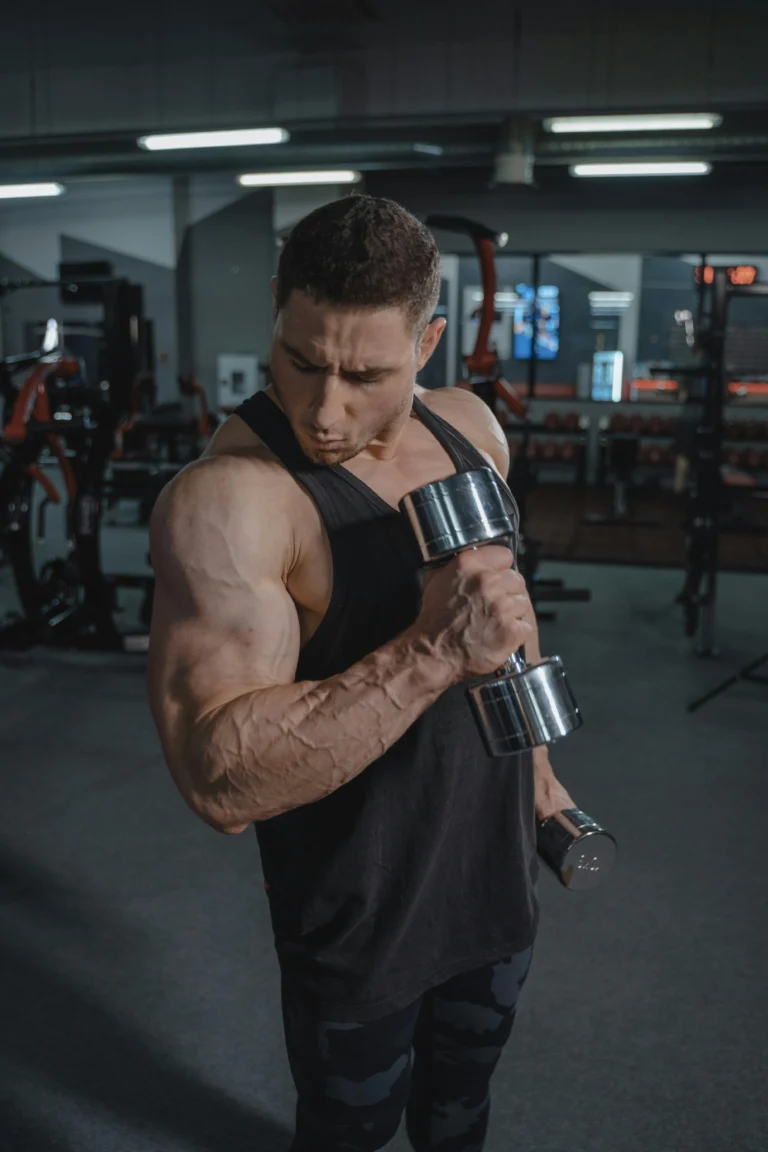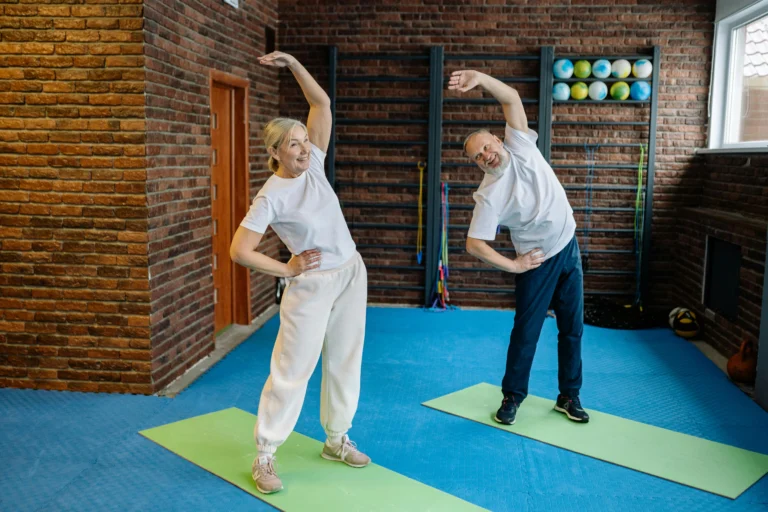Upper Body Band Workout : Boost Muscle Gains
Every fitness journey has a moment of breakthrough. For me, that moment came when I discovered the transformative power of resistance band exercises. Traditional weights felt limiting, but resistance band workouts opened a new world of strength training. They challenged my muscles in ways I never imagined.
Resistance band exercises offer an incredible approach to upper body band workouts. These versatile tools create constant muscle tension. This enables targeted muscle engagement through a full range of motion. Unlike bulky gym equipment, resistance bands provide a portable, budget-friendly solution for building strength anywhere.
Whether you’re a beginner or an experienced athlete, resistance band exercises can revolutionize your fitness routine. The key is understanding how these flexible tools can maximize your upper body strength training effectively and efficiently.
Table of Contents
Key Takeaways
- Resistance bands provide variable muscle engagement
- Workouts can be performed anywhere with minimal equipment
- Suitable for all fitness levels from beginner to advanced
- Low-impact option that reduces joint strain
- Cost-effective alternative to traditional weight training
Understanding Resistance Band Training Benefits
Resistance band training has changed the game for upper body workouts. It’s a flexible and effective way to work out, unlike old-school weights. These elastic tools bring unique benefits that can change your fitness routine for the better.
Band training offers special perks that stand out from regular weight training. Unlike traditional weights, resistance bands keep constant tension throughout your movements. This engages your muscles more fully.
Advantages Over Traditional Weights
- More affordable than expensive weight equipment
- Highly portable and easy to store
- Adaptable for multiple fitness levels
- Reduced risk of injury compared to heavy weights
Science Behind Band Resistance
Resistance bands work by increasing tension as you stretch them. This unique way challenges your muscles in a way static weights can’t. It provides a dynamic resistance that grows with your movement.
Muscle Activation Patterns
Studies show resistance band training can boost strength just like traditional weights. Athletes and fitness fans love how these bands work stabilizer muscles. This improves movement quality and performance.
Resistance bands offer a comprehensive approach to upper body strength training, making them an invaluable tool for fitness enthusiasts of all levels.
With resistance bands, you can do almost any movement, targeting every muscle group. They’re a super versatile option for your upper body workouts.
Essential Equipment for Band Training Success
Setting up a home gym with resistance bands is easy and affordable. These bands are versatile and cost-effective for strength training.
Here are the must-haves for your resistance band collection:
- Multiple resistance levels
- Door anchors
- Handles
- Exercise mat
Resistance bands are great for home workouts. You can get a full set for less than traditional gym equipment. They’re a smart choice for anyone serious about fitness.
| Band Type | Resistance Level | Best For |
|---|---|---|
| Loop Bands | Light to Heavy | Lower Body & Mobility |
| Tube Bands | Medium to Extra Heavy | Upper Body Strength |
| Power Bands | Variable | Advanced Training |
Choose bands with variable resistance for the best results. This lets you move from easy to hard workouts easily. Always check your bands for damage to stay safe while working out.
Types of Resistance Bands for Upper Body Training
Resistance bands are great for toning your upper body. They come in different types, each with its own benefits for strength and muscle growth.
Loop Bands vs Tube Bands: Understanding the Differences
Loop bands are best for lower-body exercises. But, tube bands are top-notch for working out your upper body. They have handles, making them more versatile.
- Loop Bands: Circular bands ideal for lower-body workouts
- Tube Bands: Versatile with handles for full upper body toning
- Accessories like door anchors expand tube band functionality
Power Bands: High-Intensity Training Tools
Power bands offer more resistance, ideal for those looking to tone their upper body more. They’re great for exercises like pull-ups and muscle activation.
“Power bands bridge the gap between bodyweight training and traditional resistance exercises.” – Fitness Expert
Selecting the Right Resistance Level
It’s important to pick the right resistance for your upper body workouts. Start with lighter bands if you’re new. This helps you learn the right form before moving to harder bands.
| Resistance Level | Recommended User |
|---|---|
| Light (10-25 lbs) | Beginners, Rehabilitation |
| Medium (25-35 lbs) | Intermediate Users |
| Heavy (40-50 lbs) | Advanced Fitness Enthusiasts |
Keep the tension steady and use the bands correctly for the best results in your upper body workouts.
Upper Body Band Workout Fundamentals
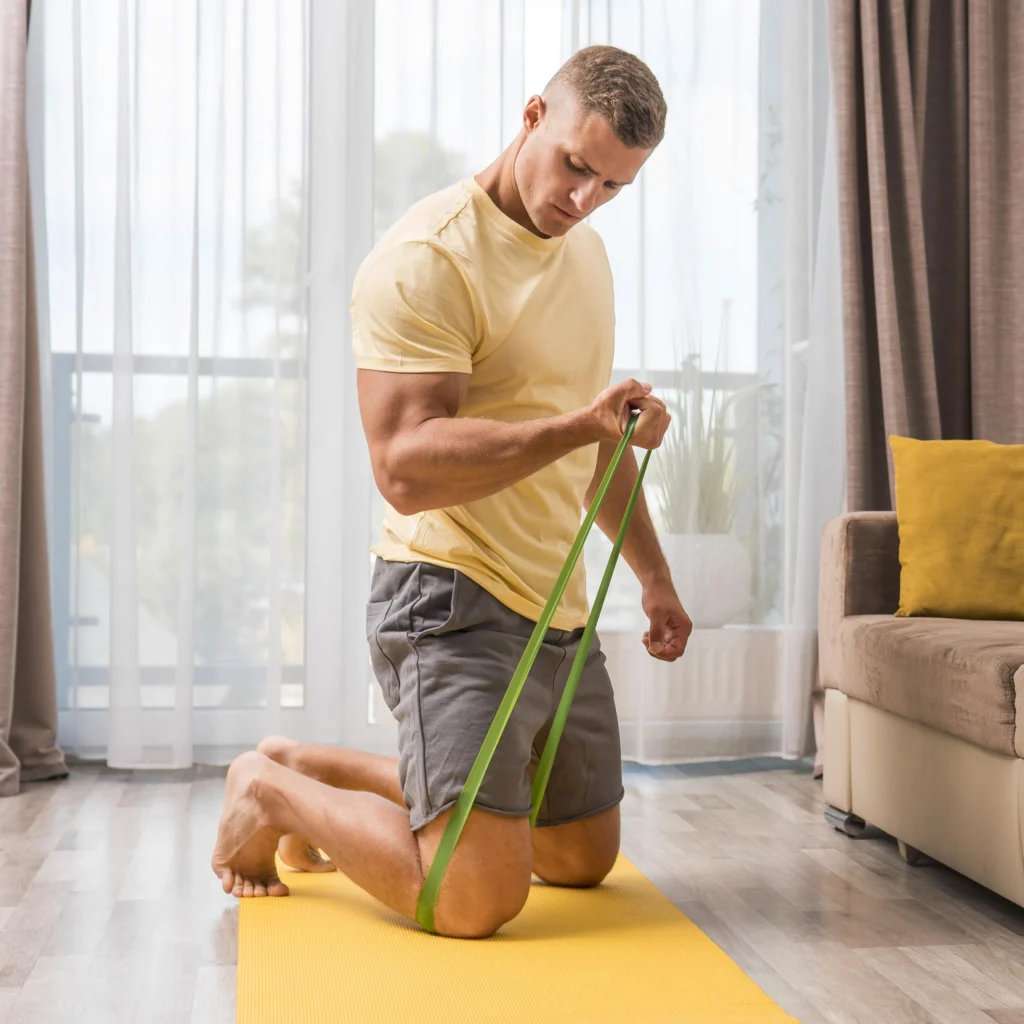
Learning to use an upper body band workout is key. Unlike weights, bands offer constant tension. This makes your muscles work harder. Plus, bands are versatile, hitting many muscles with just a few pieces of gear.
When you start your band routine, pick the right resistance. Bands come in five weights:
- Extra light
- Light
- Medium
- Heavy
- Extra heavy
Beginners should start with light to medium bands. More seasoned folks can try medium or heavy for a tougher workout. The secret to a great band workout is keeping good form and steady muscle tension.
Your band workout should focus on exercises that work many muscles at once. Resistance bands help muscles grow without hurting your joints. Key exercises include:
- Bicep curls
- Shoulder presses
- Tricep extensions
- Chest presses
- Lateral raises
It’s important to keep getting stronger. As you get better, add more weight or do more reps. Bands get harder as you stretch them, offering a unique challenge.
Proper Form and Safety Guidelines
Resistance bands have changed the game in home workouts. They offer a versatile way to build upper body strength. It’s important to learn the right form and safety tips to get the most out of your workout and avoid injuries.
Understanding safety basics is key to a great workout with bands. The National Library of Medicine stresses the need for proper technique and controlled movements.
Common Mistakes to Avoid
- Allowing bands to snap back quickly
- Using worn or damaged resistance bands
- Improper anchoring of bands
- Neglecting consistent tension during movements
Injury Prevention Tips
To stay safe during workouts, pay attention to a few important things:
- Choose the right resistance level for your fitness level
- Keep movements slow and controlled
- Check bands for wear before each use
- Warm up well to get your muscles ready
Band Care and Maintenance
Looking after your workout gear is key to safe and long-lasting use. Store bands in a cool, dry place away from direct sunlight and sharp objects. Also, check for any signs of wear or damage regularly.
By following these tips, you’ll create a safe space for building upper body strength. You’ll also avoid common workout injuries.
Building Chest and Shoulder Strength
Resistance bands are great for toning your upper body, especially your chest and shoulders. They provide constant tension, helping your muscles grow stronger.
Working out with resistance bands can be very effective for your chest and shoulders. It’s all about using the right technique and increasing the resistance as you get stronger.
- Choose bands with appropriate resistance levels
- Maintain constant tension during exercises
- Focus on controlled, deliberate movements
Here are some key exercises for toning your upper body with resistance bands:
- Banded Chest Press
- Shoulder Press
- Lateral Raises
- Chest Flyes
| Exercise | Sets | Reps | Rest Period |
|---|---|---|---|
| Chest Press | 4 | 8-15 | 30 seconds |
| Shoulder Press | 4 | 8-15 | 30 seconds |
| Lateral Raises | 3 | 12-15 | 30 seconds |
Pro tip: Progressively increase band resistance to continually challenge your muscles and promote strength development.
Try to work out your chest and shoulders at least twice a week. Do 2-3 exercises for each muscle group. Aim for 6-12 sets per session to fully engage your muscles and achieve the best results.
Back and Bicep Band Training
Resistance band training is great for building your back and bicep muscles. It helps you get stronger with exercises that offer constant tension and varied movements.
Band training works many muscles at once, making it a smart way to build strength and shape. It’s best to do back and bicep workouts 2 to 3 times a week for the best results.
Pull-Apart Variations
Pull-apart exercises are key for your upper back and rear deltoids. They also help with posture and shoulder stability. Try these:
- Standing band pull-aparts
- Bent-over band pull-aparts
- Overhead band pull-aparts
Row Techniques
Resistance band rows are great for strengthening your back. Make sure to keep the right form and engage your core:
- Single-arm band rows
- Bent-over band rows
- Seated band rows
Bicep Curl Progressions
Improve your bicep strength with band curl techniques. Start with light resistance and increase it as you get stronger. Try these:
- Standard band bicep curls
- Hammer curls
- Preacher curls
- Isometric bicep holds (30-second duration)
Keep the tension and control steady in each exercise. Resistance band workouts make your upper body training more fun and effective.
Tricep and Forearm Development
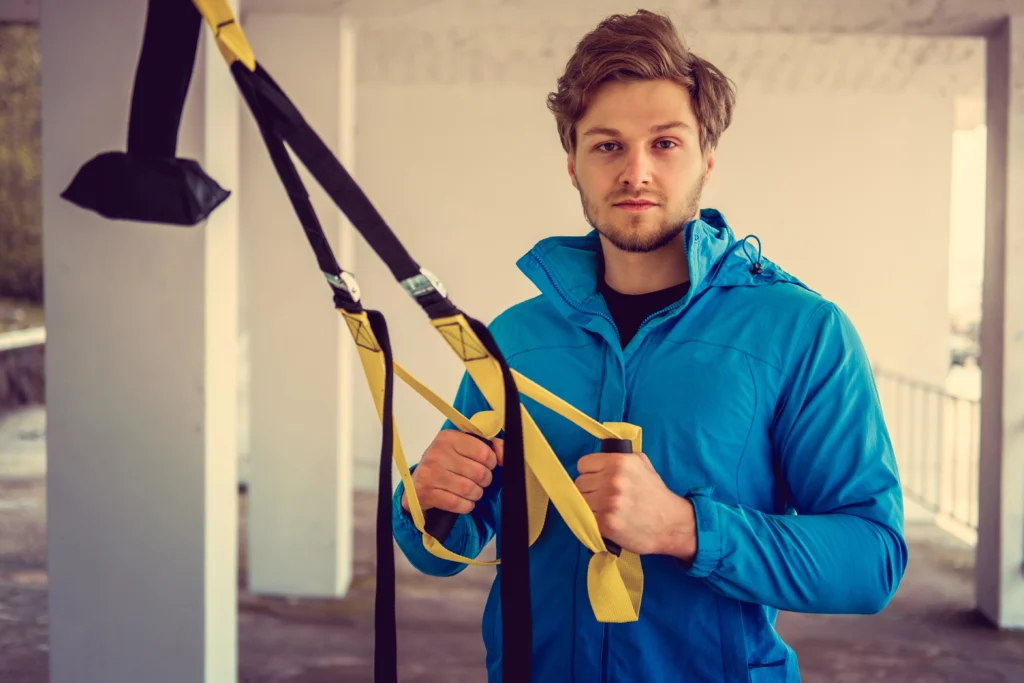
Tricep and forearm strength is key for a strong upper body. Triceps make up about 66% of your upper arm’s muscle. Resistance bands are great for working these muscles with little stress on your joints.
Adding resistance band exercises to your tricep workout can change your routine. It’s all about using the right movements to build muscle.
- Overhead Triceps Extensions
- Band Pushdowns
- Triceps Kickbacks
- Wrist Curls
- Reverse Forearm Curls
Resistance bands get harder as you move them, making your muscles work harder. Do 10-20 reps per set and keep your form right for best results.
| Exercise | Repetitions | Resistance Level |
|---|---|---|
| Triceps Overhead Extension | 12-15 | Medium Resistance |
| Band Pushdowns | 15-20 | Light to Medium |
| Forearm Wrist Curls | 10-15 | Light Resistance |
Don’t forget the importance of progressive overload in your workout. Start with light weights and get stronger over time. This way, you’ll build strong, defined arms with just a few pieces of equipment.
Advanced Upper Body Band Techniques
Want to boost your upper body strength? Resistance bands can help. They offer a unique way to challenge your muscles, unlike traditional weights. Advanced techniques can help you grow stronger and perform better.
Advanced band workouts take your upper body to the next level. They introduce complex movements and strategies. These methods target your muscles more intensely than simple exercises.
Compound Movement Patterns
Compound movements engage many muscles at once. They’re key for building strength across your body:
- Row to overhead press combinations
- Curl to tricep extension sequences
- Integrated push-pull movements
Super-Set Strategies
Super-setting boosts your workout’s intensity and burns more calories. It pairs exercises that work opposite or complementary muscles:
- Chest press followed by back rows
- Bicep curls with tricep extensions
- Shoulder raises with pull-apart movements
Progressive Overload Methods
Progressive overload is vital in band training. It keeps your muscles adapting and growing:
- Increasing band resistance step by step
- Changing exercise speed
- Adjusting how far you move
- Changing rest times between sets
Resistance bands offer tension from under 1kg to 90kg. This makes them perfect for advanced training. By using these techniques, you’ll see significant improvements in strength and performance.
Sample Weekly Band Training Program
Creating a good full body band routine needs careful planning. It’s about knowing which muscles to target. An upper body band workout can really change your fitness journey. It keeps your muscles tense and offers many training options.
A full weekly resistance band program aims for balanced muscle growth. It keeps your muscles flexible and stops you from getting stuck. This program focuses on different muscle groups. It uses the right amount of intensity and rest time.
Weekly Training Schedule
- Monday: Chest and Triceps
- Tuesday: Back and Biceps
- Wednesday: Active Recovery/Light Cardio
- Thursday: Shoulders and Core
- Friday: Full Body Resistance Band Circuit
- Saturday: Optional Light Training or Rest
- Sunday: Complete Rest
Your resistance band workout should have 10 reps per exercise. This helps build strength. Progression is key – increase band resistance as you get stronger.
Workout Intensity Guidelines
| Muscle Group | Exercise Focus | Sets | Repetitions |
|---|---|---|---|
| Chest | Band Push-Ups | 3 | 10-12 |
| Back | Resistance Band Rows | 3 | 10-12 |
| Shoulders | Lateral Raises | 3 | 10-12 |
| Triceps | Band Extensions | 3 | 12-15 |
Consistency is more important than being perfect. This upper body band workout is a structured way to build strength. It targets many muscle groups with just a few pieces of equipment.
Conclusion
Resistance bands are a great way to boost your upper body fitness. They work by activating muscles all over, helping you get stronger and move better. Plus, they’re safe for your joints and can be used at home.
Using band exercises regularly can really change your fitness game. Studies show that band workouts can make your pushing strength go up by 25% in just four weeks. They’re perfect for both newbies and those who are getting back into fitness.
Adding resistance bands to your workout routine can lead to better muscle growth and performance. They keep the tension up, making you work harder than usual. This helps you get stronger without risking injuries.
Make resistance bands your fitness buddy. They’re easy to use, effective, and backed by science. You don’t need a lot of gear or a gym membership to get fit. Your fitness journey just got a whole lot easier.


